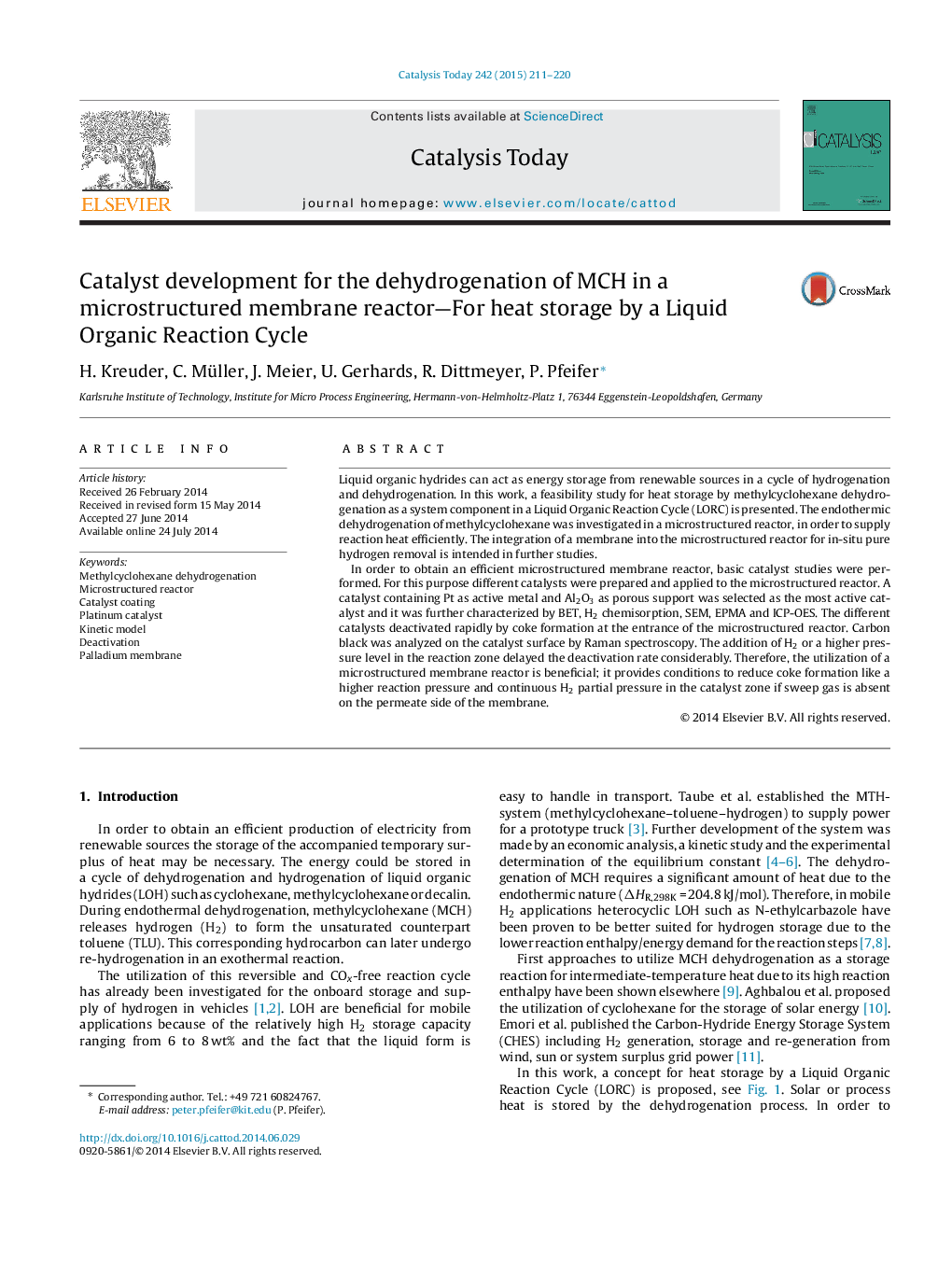| کد مقاله | کد نشریه | سال انتشار | مقاله انگلیسی | نسخه تمام متن |
|---|---|---|---|---|
| 53836 | 46986 | 2015 | 10 صفحه PDF | دانلود رایگان |

• A novel heat storage cycle based on a Liquid Organic Reaction Cycle (LORC).
• A highly active 1 wt% Pt/Al2O3 catalyst coating for dehydrogenation of methylcyclohexane.
• High total pressure and high partial pressure H2 in a microstructured membrane reactor would favor low catalyst deactivation rate.
Liquid organic hydrides can act as energy storage from renewable sources in a cycle of hydrogenation and dehydrogenation. In this work, a feasibility study for heat storage by methylcyclohexane dehydrogenation as a system component in a Liquid Organic Reaction Cycle (LORC) is presented. The endothermic dehydrogenation of methylcyclohexane was investigated in a microstructured reactor, in order to supply reaction heat efficiently. The integration of a membrane into the microstructured reactor for in-situ pure hydrogen removal is intended in further studies.In order to obtain an efficient microstructured membrane reactor, basic catalyst studies were performed. For this purpose different catalysts were prepared and applied to the microstructured reactor. A catalyst containing Pt as active metal and Al2O3 as porous support was selected as the most active catalyst and it was further characterized by BET, H2 chemisorption, SEM, EPMA and ICP-OES. The different catalysts deactivated rapidly by coke formation at the entrance of the microstructured reactor. Carbon black was analyzed on the catalyst surface by Raman spectroscopy. The addition of H2 or a higher pressure level in the reaction zone delayed the deactivation rate considerably. Therefore, the utilization of a microstructured membrane reactor is beneficial; it provides conditions to reduce coke formation like a higher reaction pressure and continuous H2 partial pressure in the catalyst zone if sweep gas is absent on the permeate side of the membrane.
Figure optionsDownload high-quality image (158 K)Download as PowerPoint slide
Journal: Catalysis Today - Volume 242, Part A, 15 March 2015, Pages 211–220